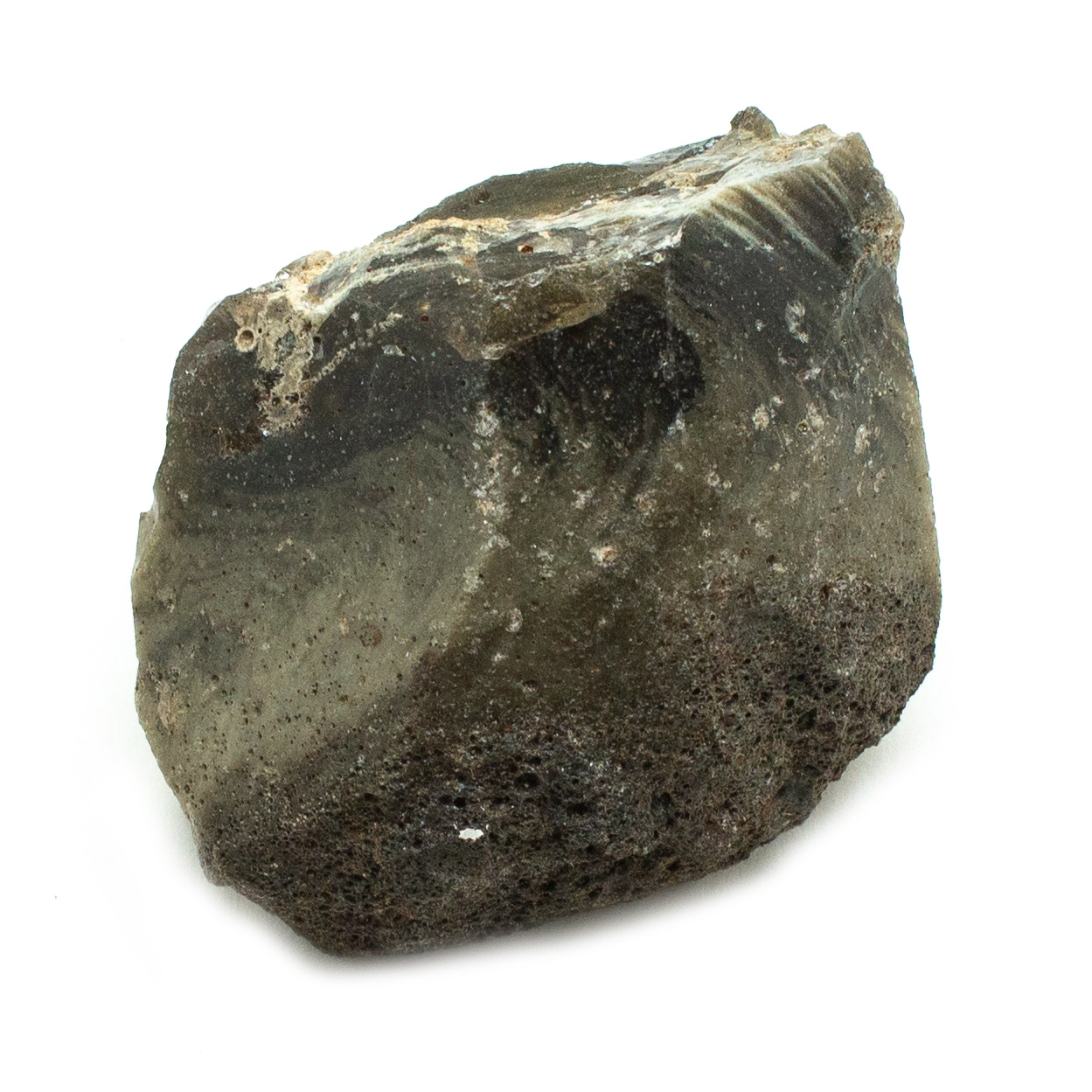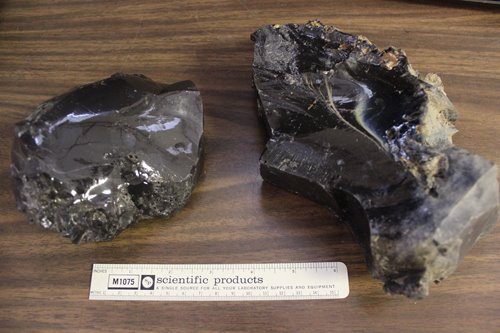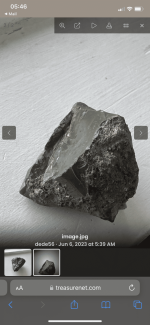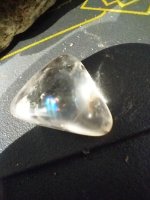You are using an out of date browser. It may not display this or other websites correctly.
You should upgrade or use an alternative browser.
You should upgrade or use an alternative browser.
🔎 UNIDENTIFIED Hey guys i was wondering what this rock could be? Never saw something like that
- Thread starter dede56
- Start date
-
- Tags
- rock and minerals
TreaShore
Full Member
- May 4, 2023
- 109
- 211
- Detector(s) used
- Minelab Sovereign GT (since 2012)
- Primary Interest:
- All Treasure Hunting
It looks like slag glass to me. I have pieces the same color that I found near former iron or smelting furnace from the 1800s
"Slag glass is an unfortunate name for glass, often beautifully coloured, that is a by-product of metal ore smelting processes.
Metal furnace slag can range from glassy to dull and stony in appearance and, when scratched, can range from hard to chalky. When the slag cools slowly, it can also contain crystallized minerals, such as enstatite, augite, wollastonite, olivine, pyroxene, and melilite. Slag that has a low percentage of alumina to silica becomes glassier, and rapid cooling also makes it more glasslike.
Slag was often used as a building material, and as railway ballast, among other things, and according to one source, also for sea walls which would explain its presence on beaches.
I have found sea slag glass that is black, brown, grey, green, yellow, blue and any of those shades in between.
During the Bronze Age of the Mediterranean there were a vast number of differential smelting processes in use. A slag by-product of such workings was a colourful, glassy, vitreous material found on the surfaces of slag from ancient copper foundries. It was primarily blue or green and was formerly chipped away and melted down to make glassware products and jewelry. It was also ground into powder to add to glazes for use in ceramics.
Historically, the re-smelting of iron ore slag was common practice, as improved smelting techniques permitted greater iron yields – in some cases exceeding that which was originally achieved. During the early 20th century, iron ore slag was also ground to a powder and used to make agate glass, also known as slag glass"
https://costaseaglass.com/slag-glass/
https://www.crystalvaults.com/shop-crystals/341354/
"Slag glass is an unfortunate name for glass, often beautifully coloured, that is a by-product of metal ore smelting processes.
Metal furnace slag can range from glassy to dull and stony in appearance and, when scratched, can range from hard to chalky. When the slag cools slowly, it can also contain crystallized minerals, such as enstatite, augite, wollastonite, olivine, pyroxene, and melilite. Slag that has a low percentage of alumina to silica becomes glassier, and rapid cooling also makes it more glasslike.
Slag was often used as a building material, and as railway ballast, among other things, and according to one source, also for sea walls which would explain its presence on beaches.
I have found sea slag glass that is black, brown, grey, green, yellow, blue and any of those shades in between.
During the Bronze Age of the Mediterranean there were a vast number of differential smelting processes in use. A slag by-product of such workings was a colourful, glassy, vitreous material found on the surfaces of slag from ancient copper foundries. It was primarily blue or green and was formerly chipped away and melted down to make glassware products and jewelry. It was also ground into powder to add to glazes for use in ceramics.
Historically, the re-smelting of iron ore slag was common practice, as improved smelting techniques permitted greater iron yields – in some cases exceeding that which was originally achieved. During the early 20th century, iron ore slag was also ground to a powder and used to make agate glass, also known as slag glass"
https://costaseaglass.com/slag-glass/
https://www.crystalvaults.com/shop-crystals/341354/
Upvote
4
TreaShore
Full Member
- May 4, 2023
- 109
- 211
- Detector(s) used
- Minelab Sovereign GT (since 2012)
- Primary Interest:
- All Treasure Hunting
Here are some web images. I have a few that look just like the blue piece below. Your piece has a duller and hazy look to it, but I also have a piece similar to that in color.


Upvote
0
- Thread starter
- #5
Thank you for your answer! I search a little bit and found out that slag glass normaly have bubble in it but mine doesn’t, on my pictures we could see something that may seem like bubble but its more like an other material looking like concreteIt looks like slag glass to me. I have pieces the same color that I found near former iron or smelting furnace from the 1800s
"Slag glass is an unfortunate name for glass, often beautifully coloured, that is a by-product of metal ore smelting processes.
Metal furnace slag can range from glassy to dull and stony in appearance and, when scratched, can range from hard to chalky. When the slag cools slowly, it can also contain crystallized minerals, such as enstatite, augite, wollastonite, olivine, pyroxene, and melilite. Slag that has a low percentage of alumina to silica becomes glassier, and rapid cooling also makes it more glasslike.
Slag was often used as a building material, and as railway ballast, among other things, and according to one source, also for sea walls which would explain its presence on beaches.
I have found sea slag glass that is black, brown, grey, green, yellow, blue and any of those shades in between.
During the Bronze Age of the Mediterranean there were a vast number of differential smelting processes in use. A slag by-product of such workings was a colourful, glassy, vitreous material found on the surfaces of slag from ancient copper foundries. It was primarily blue or green and was formerly chipped away and melted down to make glassware products and jewelry. It was also ground into powder to add to glazes for use in ceramics.
Historically, the re-smelting of iron ore slag was common practice, as improved smelting techniques permitted greater iron yields – in some cases exceeding that which was originally achieved. During the early 20th century, iron ore slag was also ground to a powder and used to make agate glass, also known as slag glass"
https://costaseaglass.com/slag-glass/
https://www.crystalvaults.com/shop-crystals/341354/
Upvote
0
Users who are viewing this thread
Total: 2 (members: 0, guests: 2)





